
The Frontera Collection is studded with curious novelty records of many kinds: rare, amusing, historical, campy, or ridiculous. One that qualifies on all counts is a Beatles tribute album by a scruffy village band named
Banda Plástica De Tepetlixpa. Titled
Adios a Los Beatles, the album contains 10 instrumental renditions of classics spanning the Fab Four’s career, from the seminal
“I Want to Hold Your Hand” to
“Carry That Weight” from
Abbey Road. The album can also be heard on YouTube, in its
entirety or
song by song.
Very little is known about the album, released with an unspecified date on an obscure label named Caleidofon. Collection founder Chris Strachwitz does not recall where or when he acquired it. The album has, however, caught the attention of some English-language websites for its odd musical character: humble ethnic brass band meets polished British pop. But the attention is not always good. One site,
Open Culture, ranked it among the 15 worst covers of Beatles songs, ever. On another blog,
Music for Maniacs, the writer was significantly more positive, if slightly perplexed. Maniacs dubbed it “folk-art madness” and proclaimed, “There is no more glorious sound for jaded ears than this rural Mexican brass band blowing berserk, off-key, highly enthusiastic instrumental versions of Beatles songs. Even the dreaded “Ob-La-Di, Ob-La-Da” sounds great as a crazy carnival theme.”
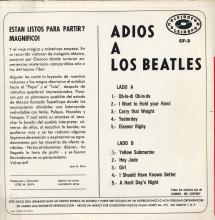
But as with all musical novelties, the artistry is not the point. This is one case where the liner notes on the back cover point to a more intriguing subject than the product inside. Written by the album’s producer, José M. Silva, the notes tell the tall tale of a secret, psychedelic trip by the Fab Four – a Mexican Magical Mystery tour.
The notes should carry a warning label: Urban legend ahead! But like many websites repeating the narrative more than 40 years later, Silva tells (or sells) the story straight. Once while on tour, he writes, the Beatles made a visit incognito to Oaxaca, the southern Mexican state rich in Indian traditions and culture, where they had “mystical experiences similar to those of faraway Tibet.” During their travels, he continues, someone told the lads about the legends surrounding two majestic volcanoes outside of Mexico City, “and the wizards detoured their bus toward the Popo and Ixta,” as the volcanoes are nicknamed.
Afterward, the producer claims, the band passed through a picturesque little town named
Tepetilxpa, southeast of Mexico City. There, he recounts, “they were recognized and given an unforgettable welcome with mole, pulque, nopales, and totopos.” To their surprise, the Beatles heard the local village band play some of their songs and were overcome by emotion, “tears rolling down their faces.” When it came time to leave, the mop tops are quoted as telling the villagers, “We will never forget you.”
It’s a fascinating fable, as fictional as the yellow submarine. There is absolutely no record of
the Beatles ever visiting Mexico, either as a group or individually, while the band was still together. Even two recent biographies –
John Lennon by Philip Norman and
The Beatles: The Biography by Bob Spitz – make no mention of Mexico in their indices.
But the facts have not prevented this legend from growing like wild mushrooms. The Beatles’ fictional trip to Mexico is still mentioned repeatedly in fan blogs as if it were true, although it’s occasionally debunked by readers in the comments. Skeptics may wonder how the Beatles could have undertaken a major trip in public at the peak of their popularity without attracting the press or the paparazzi, not to mention big crowds and police.
Not surprisingly, no pictures have ever surfaced of the band’s supposed sojourn south of the border. In 2009, however,
two photos purporting to show the Beatles in Mexico turned up for sale at auction, along with some supposed autographs by the Fab Four, for a starting bid of $2500. A critic on the Mexican blog site El Gesto de la Neurona easily debunked the pix as misrepresentations: obvious snapshots of the band, circa mid-’60s, that had been taken elsewhere. According to the blogger, the seller had no documentation to prove his claim, except to say he was sure the photos were shot in Mexico sometime after 1970. The trouble is, that’s the year the band broke up.
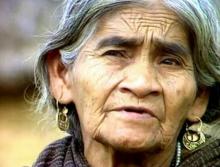
Ironically, the same blogger who blew the whistle on the photo scam went on to “confirm” the most fascinating aspect of the Beatles-in-Mexico story: an alleged side trip the band took to meet a world-renowned indigenous shaman named
María Sabina. And the plot thickens!
This legend has it that the Beatles trekked to the mountains of Oaxaca to commune with the world-renowned mystic and curandera, who specialized in hallucinogenic mushrooms. Sabina, born in the 1890s in the remote village of
Huautla de Jiménez, is the subject of a 1978 documentary,
María Sabina: mujer espíritu, directed by Nicolás Echevarría of Cabeza de Vaca (1991) fame. In the film, Sabina is heard speaking in the native language of the Mazatec people of Oaxaca, who inhabit a region that carries their name, the Sierra Mazateca. In her dealings with outsiders, the curandera always needed a translator because she didn’t speak Spanish.
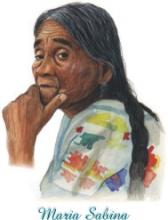
Sabina first gained international attention in 1957, after being featured in
Life Magazine, one of the most popular periodicals of its day. The article, “Seeking the Magic Mushroom,” was written by R. Gordon Wasson, a banker and ex-journalist from Montana who also specialized in ethnomycology, the sociological and historical study of fungi. Wasson wrote about visiting the mysterious spiritualist in her hometown, where she allowed him to participate in a velada, a healing vigil based on the ingestion of mushrooms. A reprint of the article, which must have been mind-blowing in its day, is published online, along with photos of Wasson and Sabina during their mushroom-eating ceremony. There is also a recording of Sabina singing ceremonial chants, produced a year earlier by Wasson and his pediatrician wife, Valentina, and released by Smithsonian Folkways Recordings as
Mushroom Ceremony of the Mazatech Indians of Mexico.
The Wassons are said to be the first westerners made privy to the secrets of the ritual, and their story unleashed a wave of counter-cultural interest in the curandera and her magic mushrooms. All kinds of hippies and seekers descended on the region, including many celebrities. Wikipedia claims the shaman’s celebrity callers included Bob Dylan, John Lennon, Mick Jagger, and Keith Richards, but the claim lacks a citation and, like the claim that the Beatles were there, must be regarded with more than a grain of salt.
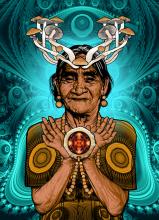
Still, the legend has a life of its own. Like the rumors about Paul being dead, faithful fans look for signs in the smallest details. Which brings us back to the blogger who debunked those bogus Beatles photos: On his site, which has been recently inactive, he points to poetic proof that the Beatles had indeed experimented with hallucinogenic mushrooms in Mexico under the spiritual guidance of María Sabina. As literary evidence, he refers to the opening lyrics of “Let It Be.” Without explicitly spelling it out, he’s making a clear reference to the line: “When I find myself in times of trouble/Mother Mary comes to me.”
There it is: Mary must be María Sabina! And of course, the Walrus was Paul.
Claims about famous people visiting the humble shaman in Oaxaca are passed on – and amplified – even by authors, artists, and other serious observers. One website devoted to Mexico’s psilocybin scene and written by Texas sculptor David Smith, adds
Pete Townshend of the Who to the list of pilgrims allegedly trekking to the Sierra Madre mountains to see Sabina. Even Walt Disney gets into the act. According to
this blog about Sabina written by a Mexican computer software student, the creator of Mickey Mouse is said to have made the mushroom pilgrimage, as allegedly did British author Aldous Huxley.
There’s one more fanciful tidbit worth mentioning about the Beatles and Mexico:

On a Mexican Yahoo! Answers page (Yahoo! Respuestas),
a fan writes that the satin, fluorescent-colored military suits worn by the Beatles on the cover of their 1967
Sgt. Pepper’s album (
Sargento Pimienta) had been created by Mexican designer Manuel Cuevas. According to multiple sources, however, the iconic outfits were actually designed by an established London theatrical costumer,
M. Berman Ltd. The false sartorial claim was made in passing by a poster identified as Alessandro95 N.P., who was addressing yet another inquiry about the Beatles’ visit to Huatla. Yes, he went on to explain most assuredly, they did indeed come to the mythical mountains to see María Sabina, this after becoming disillusioned with Indian guru Maharishi Mahesh Yogi. The trip was kept so secret, the blogger contends, that to this day some people still believe that the band actually went to the city of Oaxaca instead!
For the record: The Beatles did plan a concert in Mexico in 1965 but it was cancelled, reportedly because Mexican authorities opposed it. More recently, Paul McCartney performed to wildly enthusiastic crowds there, including
this free concert in 2012 at the capital’s massive Zócalo, the historic main square, which drew some 80,000 fans. The outpouring of love for the ex-Beatle prompted
The Wall Street Journal to write about the enduring rage for
Beatlemania in Mexico.
Most of those covers try to be faithful to the originals. However, there are interpretations that give the Beatles a Latin stylistic twist. The Maríachi Mexico 70 De Pepe Lopez does a Maríachi version of
“Yesterday,” perhaps the Beatles’ most covered song, backed by (what else?)
“Ob-La-Di, Ob-La-Da.”
John Lennon’s aching rendition of “Girl,” from the folksy
Rubber Soul album, gets a romantic bolero treatment by Trio Los Panchos, titled
“Muchacha,” with lyrical Spanish verses by Alfredo Gil. Meanwhile, the rocking “I’m a Loser,” featuring Lennon’s wailing vocals, is smoothed out and softened in a sweet Texas two-step by Los Inocentes in their version,
“He Perdido,” on the McAllen-based Falcon label. Finally, the Chapala Beach Boys do a schmaltzy take on
"Michelle," with McCartney’s melody carried alternately by an off-key trumpet and a loungey organ.
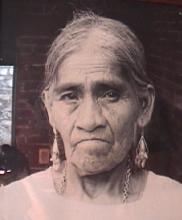
There is a final postscript on the sad, real story of María Sabina, whose celebrity wreaked unwanted, chaotic consequences. Locals blamed her for bringing hordes of outsiders to their remote region, revealing the secrets of their sacred rituals, and rending the social fabric of their ancient culture. Her home was burned and she was ostracized by the community where she lived until her death at age 91 in 1985. Despite her fame – and the commercialization of her name and image on everything from t-shirts to taxi cabs – she died destitute and filled with regret.
The backlash notwithstanding, Sabina is still admired as a spiritual leader by many in Mexico and beyond. Her memory is enshrined in the name of respected Mexican rock group
Santa Sabina. And El Tri, a seminal rock band from Mexico City, dedicated a driving, electrified song in her honor, pronouncing her “a symbol of wisdom and love.” A video of their tune “María Sabina,” featuring Alex Lora’s rasping vocals, has over 1.2 million views on YouTube.
That video, posted by a fan, displays an array of still shots of the shaman and all the famous people who allegedly went to see her. Of course, the Beatles are among them.
-Agustín Gurza








Wow!
by Michael (not verified), 04/05/2023 - 18:02Yolanda, thank you for your fascinating account of how the day of John Lennon's death affected Mexico and how the people there reacted to the loss.
Beatles in Durango
by Yolanda Rodriguez (not verified), 03/17/2021 - 14:24In 2005 I travelled to my mom's home town, Durango, Durango, arriving by bus at 6 a.m. from Mazatlan. I got to my hotel then slept. Several hours later, I awoke to the sound of what I thought was a radio playing the song “The Ballad of John and Yoko,” wafting in via the hotel’s central air column. I got dressed and went out to find the source.
It was already late afternoon but I followed the sound of the music which came, not from the record store next door, but from somewhere behind the hotel. There I found a small placita with a stage, amps and mic set up and maybe two hundred chairs facing it, with puestos set up all around selling goods and food. There were maybe eighty people there already, listening to a deejay while a band was setting up. It was a celebration to honor John Lennon on the day of his death.
I was told a story about the origin of the festival; not sure of its veracity, but they say during their first American tour in the 60’s, the Beatles slipped into Mexico and stopped in Durango. They wanted to play but Ringo had stayed behind in the US and they were missing a drummer. The concert went on, thanks to a Mexican musician whose name I didn’t note, who filled in for Ringo and forever after became celebrated locally as “El Beatle Mejicano.”
Durango is a college town and the Beatles are still wildly popular, so much so that the festival featured many really great local groups playing Beatles songs with an impressive sing a-long in English where everyone seemed to know all the words, not just the abuelos but the niños too! The festival culminated with a set by their best Beatles cover band (in their 60’s suits) and the guest of honor — El Beatle Mejicano. I was so thrilled, it made me want to move to Durango immediately.